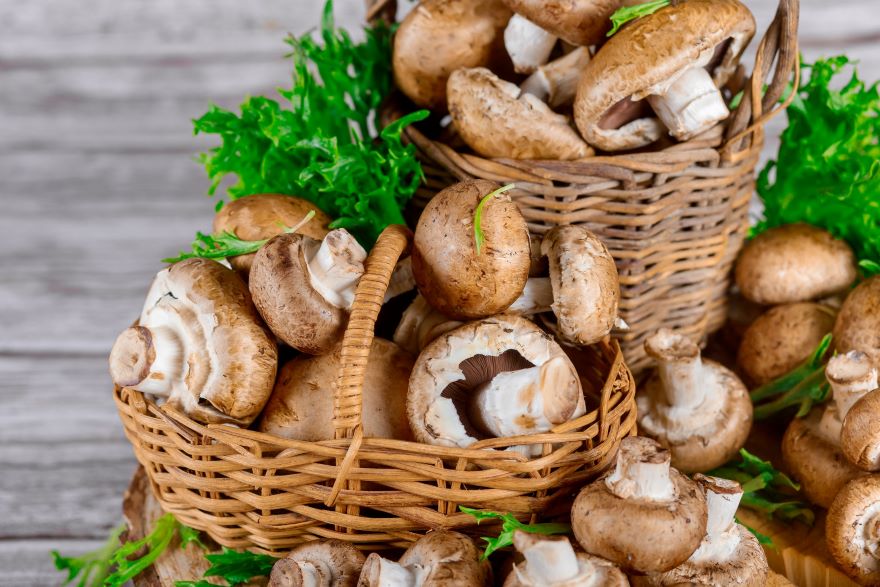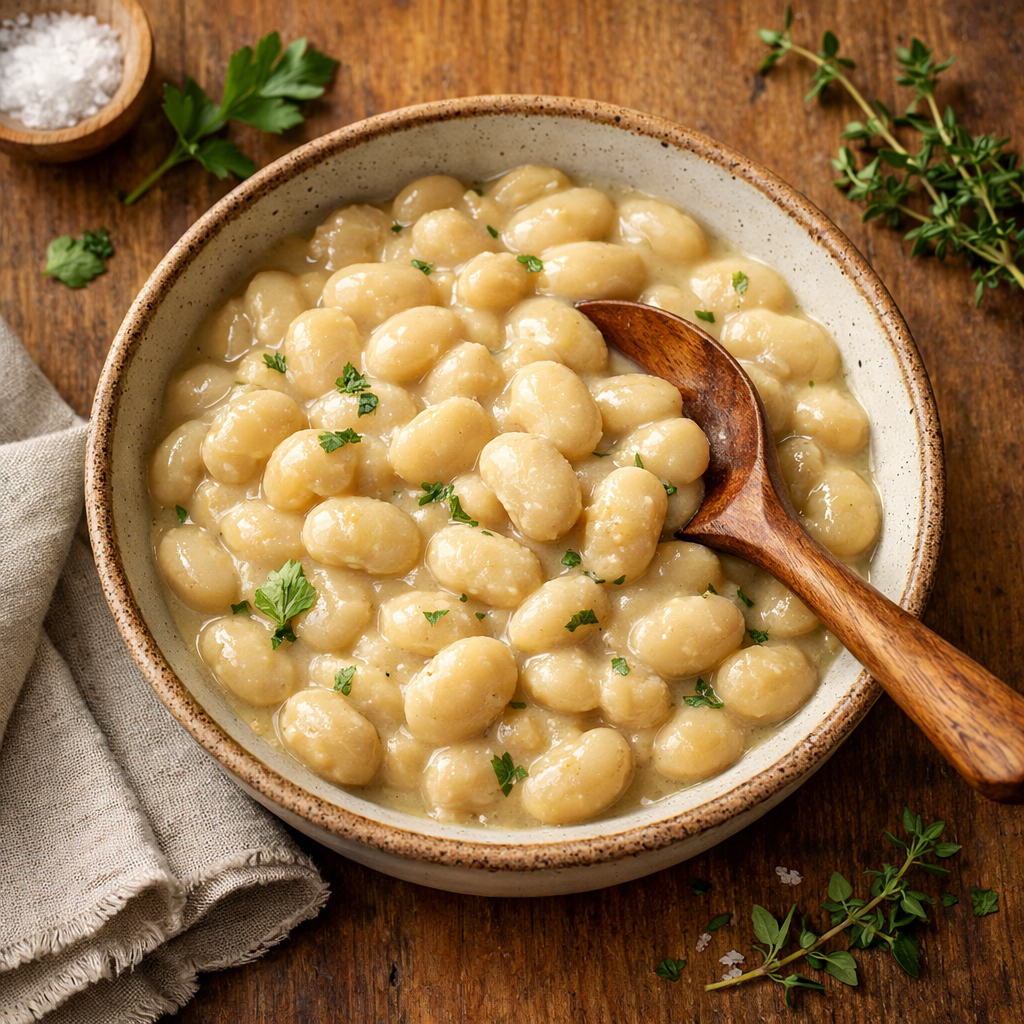Growing portobello mushrooms can be a rewarding and delicious endeavor. These large mushrooms have a rich, savory flavor that many find irresistible, and their meaty texture makes them an ideal vegetarian substitute for meat dishes. By learning how to grow portobello mushrooms at home, you’ll not only save money on grocery bills, but also have the satisfaction of cultivating your own fresh, tasty produce.

To successfully grow portobello mushrooms, you’ll need to choose the right growing medium and create an environment that’s conducive to their growth. This means providing the proper moisture, temperature, and light conditions to encourage your mushrooms to thrive. Once you’ve set up your growing area, you’ll be ready to plant and, with proper maintenance, soon after see the fruits of your labor.
Key Takeaways
- Growing portobello mushrooms can save you money and provide fresh, delicious produce.
- The key to success is choosing the right growing medium and creating the ideal environment.
- Proper maintenance and care will ensure your portobello crop thrives.
Choosing Your Growing Medium
As a mushroom enthusiast, I understand that finding the right growing medium is crucial for successful cultivation of portobello mushrooms. In this section, we’ll explore different options, such as compost and manure-based substrates, as well as synthetic substrates and their benefits.
Compost and Manure-Based Options
Compost and manure-based options have been traditionally used for growing mushrooms. The mix of organic materials provides essential nutrients for mushrooms to grow and thrive. One popular option for growing portobello mushrooms is a manure-based compost. This substrate usually consists of straw mixed with horse or cow manure. I like using this substrate as it retains moisture well and provides an ideal environment for mushroom growth.
Here are some key characteristics of compost and manure-based substrates:
- Rich in nutrients: Compost provides a variety of nutrients required for mushroom growth, such as nitrogen, phosphorus, and potassium.
- Good moisture retention: An ideal substrate will retain moisture without becoming soggy or compacted, and compost manages to do just that.
- Ecologically friendly: Using compost and manure-based substrates supports recycling of organic matter and is a sustainable option.
Synthetic Substrates and Their Benefits
In contrast to traditional substrates, synthetic substrates are a modern alternative for growing portobello mushrooms. These substrates are often made from ingredients like coco coir, peat moss, and vermiculite.
Some benefits of using synthetic substrates include:
- Consistency: Synthetic substrates offer a more consistent growing medium, ensuring stable conditions for the mushrooms.
- Customization: By mixing different synthetic materials, I can create a substrate tailored to the specific needs of portobello mushrooms.
- Ease of use: Synthetic substrates often come sterilized and ready-to-use, making them a convenient option for beginners.
In conclusion, both compost and manure-based substrates, as well as synthetic substrates, offer advantages for growing portobello mushrooms. I recommend considering factors such as convenience, eco-friendliness, and consistency when deciding which type of substrate suits your needs best.
Creating the Ideal Portobello Environment
Indoor Cultivation Tips
Growing portobello mushrooms at home requires careful attention to the environment. As a home mushroom cultivator, I have learned the importance of providing the right conditions for the mushrooms to thrive. This involves selecting a clean and well-ventilated space, such as a basement or unused closet. Indoor cultivation allows me to have better control over crucial factors like temperature, moisture, and humidity.
When growing portobellos indoors, I use containers or grow bags to create a contained environment, and I ensure to sterilize the space and materials frequently to reduce the risk of contamination.
Managing Moisture and Humidity
Portobello mushrooms love a moist environment. In my experience, maintaining a humidity level of 80-85% is crucial for their successful growth. I use a hygrometer to monitor humidity levels and adjust them as needed. Properly misting the area around the mushrooms and using a humidifier also helps maintain the desired humidity levels. However, be careful not to over-water the substrate, as it may lead to issues like mold and bacterial growth. Ensuring adequate ventilation is vital to maintain a good balance between moisture and humidity.
Temperature and Light Requirements
Temperature is another essential factor to consider when growing portobello mushrooms. From my own cultivation experience, they prefer a temperature range of 60-70°F (15-21°C). I use a thermostat to monitor and maintain the right temperature for the mushrooms to flourish.
As for lighting, portobello mushrooms are not photosynthetic, so they don’t need sunlight to grow. However, a minimal amount of light may still be beneficial for them to grow correctly. Indirect natural light or indirect artificial light is sufficient, but they should be kept away from direct sunlight or strong artificial light sources.
The Planting Process for Portobello Mushrooms

Preparing the Spawn and Substrate
In my experience, the first step in growing Portobello mushrooms is to prepare the spawn and substrate. Spawn is the mycelium of the mushroom, which is essentially the root system. In order to grow healthy mushrooms, I usually begin with quality spawn that can be purchased online or from a reputable supplier.
For the substrate, I’ve found that a mixture of manure-based compost and straw works well for Portobello mushrooms. To prepare the substrate, I pasteurize it by heating it at 140°F for 1-2 hours, which eliminates potential contaminants and competitor fungus. After pasteurization, I allow the substrate to cool down to around 75°F before adding the spawn. A helpful tip I’ve learned is that maintaining a substrate moisture content of about 60-70% is crucial for optimal mycelium growth.
Layering and Inoculation Techniques
Once the spawn and substrate are prepared, I begin layering the planting bed. I construct a planting bed that is 4 feet by 4 feet and 8 inches deep, as mentioned in this guide for growing Portobello mushrooms. Then, I fill it with the prepared substrate mixture, approximately 5 or 6 inches deep.
Once the planting bed is set, I inoculate the bed with the Portobello spawn. In software development terms, think of this inoculation process as “seeding the bed” for mycelium growth. To do this, I sprinkle the spawn evenly on top of the substrate, and then mix it in gently. It’s essential to handle the spawn carefully, as it is delicate and can be easily damaged.
After the inoculation, I cover the bed with a barrier to keep in moisture while allowing for air exchange. I have found that using a thin layer of damp newspaper or cardboard works well. Lastly, I maintain the bed’s moisture levels by misting it regularly with water. In about 2 weeks, the mycelium should fully colonize the bed, creating a beautiful network of white, fluffy growth. At that point, I know my Portobello mushrooms are ready for the next stage of growth, the fruiting phase.
By following these steps and incorporating the knowledge I’ve gained, I’ve been able to grow delicious and nutritious Portobello mushrooms in my own garden.
Maintaining Your Mushroom Crop

Watering and Feeding Schedule
When I grow portobello mushrooms, I find it essential to maintain a proper watering and feeding schedule. Since mushrooms thrive in humid environments, I use a spray bottle to mist the growing medium regularly. It keeps the substrate moist without soaking it. Here’s a basic watering and feeding schedule that works well for me:
- Daily: Mist the substrate with a spray bottle to maintain humidity.
- Weekly: Check the moisture levels of the peat moss by touching it with my gloves. If it feels too dry, I add some water to maintain the right moisture balance.
It’s also crucial to provide nutrients for the mushroom growth. Most mushroom growing kits come with a nutrient-rich substrate such as peat moss, but it’s also possible to create your own mixture. I typically use a mix of peat moss, straw, and compost, ensuring that my mushrooms receive the necessary nutrients throughout their growing cycle.
Disease Prevention and Pest Control
To prevent diseases and pests from affecting my mushroom crop, I take a proactive approach. Here are some steps I follow to keep my mushrooms healthy and pest-free:
- Sanitize the growing area: Before starting, I always clean the containers and other tools to remove any contaminants or harmful microorganisms.
- Wear clean gloves: I wear a pair of clean gloves when handling mushrooms and the substrate to minimize the spread of germs.
- Monitor for pests: I keep an eye out for any signs of pest activity like flies or mites, which can harm my mushrooms. If I notice any pests, I take immediate action by removing the affected mushrooms and applying organic pest control methods like neem oil or diatomaceous earth.
- Good air circulation: Proper air circulation is important for preventing mold growth, so I ensure that my mushroom-growing setup has a good ventilation system.
By following these steps, I maintain a healthy and flourishing portobello mushroom crop. Remember to adapt this information to your specific mushroom growing setup and environment.
Harvesting and Post-Harvest

When and How to Harvest
I’ve found that the ideal time to harvest portobello mushrooms is when the caps have fully opened, revealing their gills. At this stage, the mushrooms have maximum flavor and tend to be firm. However, you may choose to harvest them earlier if you prefer a more delicate taste. To harvest, I gently twist and pull the mushrooms from the substrate or use a sharp knife to carefully cut the stem at its base.
If you’re growing mushrooms from a mushroom kit, follow the kit instructions for the best harvest yield and quality. Remember to keep the growing environment clean and free of contaminants to ensure healthy, high-quality mushrooms.
Storage and Usage Tips
After harvesting my portobello mushrooms, here’s what I do to store and make the most of them:
- Cleaning: I use a damp paper towel or soft brush to gently remove any dirt from the mushroom caps. It’s important not to wash them with water, as they can absorb moisture and become slimy.
- Storing: I store my fresh mushrooms in a paper bag or a container lined with paper towels in the refrigerator. This helps to maintain their moisture level and prolong their shelf life, which typically lasts for 5-7 days.
- Freezing: If I want to store my mushrooms for longer periods, I clean and slice them, then lay the slices on a parchment paper-lined tray and freeze them. Once they are frozen, I transfer the slices to a sealed container or freezer bag, and they can last up to 3 months.
- Cooking: I enjoy using my freshly harvested portobello mushrooms in a variety of dishes, such as stir-fries, soups, and stuffed mushrooms. They can be grilled, sautéed, or used as a meat substitute because of their hearty texture.
By following these steps, I can ensure that the quality and taste of my portobello mushrooms remain optimal. Remember to adjust storage and usage according to your personal preferences and enjoy the delicious, homegrown portobello mushrooms!
Frequently Asked Questions

What is the best temperature range for cultivating Portobello mushrooms?
I find that the ideal temperature range for growing Portobello mushrooms is between 60-70°F. Maintaining this temperature will support healthy mushroom growth, as mentioned in this guide.
How can you effectively create Portobello mushroom spawn?
To create Portobello mushroom spawn, I start with a sterile culture of Portobello mycelium. I then inoculate it into a grain-based substrate like rye berries or millet. Once the mycelium has fully colonized the grains, I have my Portobello mushroom spawn ready for inoculating the main substrate.
Which substrates are most suitable for growing Portobello mushrooms?
I have found that Portobello mushrooms thrive in a substrate consisting of compost, gypsum, and straw. As mentioned on Chef’s Resource, it’s vital to keep the growing medium moist to ensure successful growth.
What is the average time required for Portobello mushrooms to fully mature?
Portobello mushrooms typically take about 4-6 weeks to fully mature. However, this timeframe can vary depending on factors like temperature, humidity, and substrate composition.
How do you obtain spores for cultivating Portobello mushrooms?
I usually obtain Portobello mushroom spores by purchasing them from a reliable online vendor or by collecting them from a mature mushroom cap. To harvest spores, you can place the cap gill-side-down on a sheet of paper or a glass surface and leave it for several hours, allowing the spores to drop and form a spore print.
Is it more challenging to grow Portobello mushrooms compared to other varieties?
In my experience, growing Portobello mushrooms can be slightly more challenging compared to other varieties, due to their preference for specific substrate mixes and temperature ranges. Still, with proper care and attention, I have had successful growth and harvests of Portobello mushrooms.

*We may earn a commission for purchases made using our links. Please see our disclosure to learn more.



